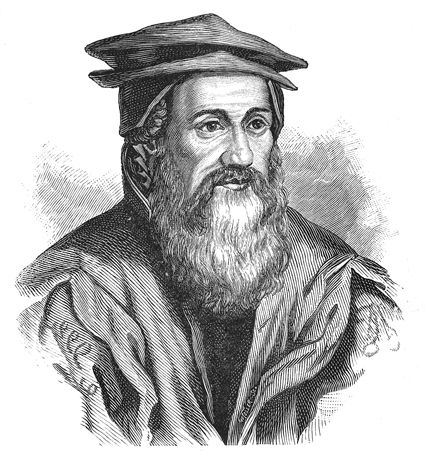|
Fredrik Adam Smitt
Fredrik Adam Smitt, (9 May 1839 in Halmstad – 19 February 1904 in Stockholm), was a Swedish zoologist. Biography Smitt studied in Lund and Uppsala where he received his doctorate in 1863. In 1861 and 1868 He participated in the Swedish expeditions to Svalbard. In 1871 he was appointed professor at the Swedish Museum of Natural History, where he was in charge of the Department of Vertebrates. From 1879 he also taught zoology at Stockholm University Stockholm University (SU) () is a public university, public research university in Stockholm, Sweden, founded as a college in 1878, with university status since 1960. With over 33,000 students at four different faculties: law, humanities, social .... Smitt produced both popular works and many scientific papers. Besides his scientific work, Smitt also championed the modernization of the techniques herring fisheries. Taxon described by him *See :Taxa named by Fredrik Adam Smitt Selected works *Ur högre djurens utvecklingshist ... [...More Info...] [...Related Items...] OR: [Wikipedia] [Google] [Baidu] |
Halmstad
Halmstad () is a port, university, industrial and recreational urban areas of Sweden, city at the mouth of the Nissan (river), Nissan river, in the provinces of Sweden, province of Halland on the Sweden, Swedish west coast. Halmstad is the seat of Halmstad Municipality and the capital of Halland County. The city had a population of 71,422 in 2020, out of a municipal total of over 100,000. Halmstad is Sweden's 19th-largest city by population and located about midway between Gothenburg (the second most populous) and Malmö (the third). History Halmstad, at the time part of the Kingdom of Denmark, received its first city charter in 1307, and the city celebrated its 700th anniversary in 2007. The oldest remains of that first town are to be found at "Övraby" upstream on Nissan, just south of and quite close to the present day regiment buildings. The remains of the church can still be seen today between a defunct brick industry and a former landfill. In the 1320s the town moved to t ... [...More Info...] [...Related Items...] OR: [Wikipedia] [Google] [Baidu] |
Stockholm
Stockholm (; ) is the Capital city, capital and List of urban areas in Sweden by population, most populous city of Sweden, as well as the List of urban areas in the Nordic countries, largest urban area in the Nordic countries. Approximately 1 million people live in the Stockholm Municipality, municipality, with 1.6 million in the Stockholm urban area, urban area, and 2.5 million in the Metropolitan Stockholm, metropolitan area. The city stretches across fourteen islands where Mälaren, Lake Mälaren flows into the Baltic Sea. Outside the city to the east, and along the coast, is the island chain of the Stockholm archipelago. The area has been settled since the Stone Age, in the 6th millennium BC, and was founded as a city in 1252 by Swedish statesman Birger Jarl. The city serves as the county seat of Stockholm County. Stockholm is the cultural, media, political, and economic centre of Sweden. The Stockholm region alone accounts for over a third of the country's Gros ... [...More Info...] [...Related Items...] OR: [Wikipedia] [Google] [Baidu] |
Zoologist
Zoology ( , ) is the scientific study of animals. Its studies include the structure, embryology, classification, habits, and distribution of all animals, both living and extinct, and how they interact with their ecosystems. Zoology is one of the primary branches of biology. The term is derived from Ancient Greek , ('animal'), and , ('knowledge', 'study'). Although humans have always been interested in the natural history of the animals they saw around them, and used this knowledge to domesticate certain species, the formal study of zoology can be said to have originated with Aristotle. He viewed animals as living organisms, studied their structure and development, and considered their adaptations to their surroundings and the function of their parts. Modern zoology has its origins during the Renaissance and early modern period, with Carl Linnaeus, Antonie van Leeuwenhoek, Robert Hooke, Charles Darwin, Gregor Mendel and many others. The study of animals has largely mov ... [...More Info...] [...Related Items...] OR: [Wikipedia] [Google] [Baidu] |
Lund University
Lund University () is a Public university, public research university in Sweden and one of Northern Europe's oldest universities. The university is located in the city of Lund in the Swedish province of Scania. The university was officially founded in 1666 on the location of the old ''studium generale'' next to Lund Cathedral. Lund University has nine Faculty (division), faculties, with additional campuses in the cities of Malmö and Helsingborg, with around 47,000 students in 241 different programmes and 1,450 freestanding courses. The university has 560 partner universities in approximately 70 countries. It belongs to the League of European Research Universities as well as the global Universitas 21 network. Among those associated with the university are five Nobel Prize winners, a Fields Medal winner, prime ministers and business leaders. Two major facilities for materials research have been recent strategic priorities in Lund: MAX IV, a synchrotron radiation laboratory – in ... [...More Info...] [...Related Items...] OR: [Wikipedia] [Google] [Baidu] |
Uppsala University
Uppsala University (UU) () is a public university, public research university in Uppsala, Sweden. Founded in 1477, it is the List of universities in Sweden, oldest university in Sweden and the Nordic countries still in operation. Initially founded in the 15th century, the university rose to significance during the rise of Swedish Empire, Sweden as a great power at the end of the 16th century and was then given relative financial stability with a large donation from Monarchy of Sweden, King Gustavus Adolphus of Sweden, Gustavus Adolphus in the early 17th century. Uppsala also has an important historical place in Swedish national culture, and national identity, identity for the Swedish establishment: in historiography, religion, literature, politics, and music. Many aspects of Swedish academic culture in general, such as the white student cap, originated in Uppsala. It shares some peculiarities, such as the student nation system, with Lund University and the University of Helsink ... [...More Info...] [...Related Items...] OR: [Wikipedia] [Google] [Baidu] |
Svalbard
Svalbard ( , ), previously known as Spitsbergen or Spitzbergen, is a Norway, Norwegian archipelago that lies at the convergence of the Arctic Ocean with the Atlantic Ocean. North of continental Europe, mainland Europe, it lies about midway between the northern coast of Norway and the North Pole. The islands of the group range from 74th parallel north, 74° to 81st parallel north, 81° north latitude, and from 10th meridian east, 10° to 35th meridian east, 35° east longitude. The largest island is Spitsbergen (37,673 km2), followed in size by Nordaustlandet (14,443 km2), (5,073 km2), and Barentsøya (1,288 km2). Bear Island (Norway), Bjørnøya or Bear Island (178 km2) is the most southerly island in the territory, situated some 147 km south of Spitsbergen. Other small islands in the group include Hopen (Svalbard), Hopen to the southeast of Edgeøya, Kongsøya and Svenskøya in the east, and Kvitøya to the northeast. The largest settlement is Longyearbyen, situated in Isfjor ... [...More Info...] [...Related Items...] OR: [Wikipedia] [Google] [Baidu] |
Swedish Museum Of Natural History
The Swedish Museum of Natural History (), in Stockholm, is one of two major museums of natural history in Sweden, the other one being located in Gothenburg. The museum was founded in 1819 by the Royal Swedish Academy of Sciences, but goes back to the collections acquired mostly through donations by the academy since its foundation in 1739. These collections had first been made available to the public in 1786. The museum was separated from the Academy in 1965. One of the keepers of the collections of the academy during its earlier history was Anders Sparrman, a student of Carl Linnaeus and participant in the voyages of Captain James Cook. Another important name in the history of the museum is the zoologist, paleontologist and archaeologist Sven Nilsson, who brought the previously disorganised zoological collections of the museum into order during his time as keeper (1828–1831) before returning to Lund as professor. The present buildings for the museum in Frescati, Stockho ... [...More Info...] [...Related Items...] OR: [Wikipedia] [Google] [Baidu] |
Stockholm University
Stockholm University (SU) () is a public university, public research university in Stockholm, Sweden, founded as a college in 1878, with university status since 1960. With over 33,000 students at four different faculties: law, humanities, social sciences, and natural sciences, it is one of the largest universities in Scandinavia. Stockholm University was granted university status in 1960, making it the fourth oldest List of universities in Sweden, Swedish university. As with other public universities in Sweden, Stockholm University's mission includes teaching and research anchored in society at large. History The initiative for the formation of Stockholm University was taken by the Stockholm City Council. The process was completed after a decision in December 1865 regarding the establishment of a fund and a committee to "establish a higher education institution in the capital".Thomasson, Carl-Gustaf, Stockholms högskolas matrikel 1878–1887. Stockholm 1969, sid. 52 The nine m ... [...More Info...] [...Related Items...] OR: [Wikipedia] [Google] [Baidu] |
:Category:Taxa Named By Fredrik Adam Smitt
Fredrik Adam Smitt Fredrik Adam Smitt, (9 May 1839 in Halmstad – 19 February 1904 in Stockholm), was a Swedish zoologist. Biography Smitt studied in Lund and Uppsala where he received his doctorate in 1863. In 1861 and 1868 He participated in the Swedish expedi ... (9 May 1839 – 19 February 1904), was a Swedish zoologist. Smitt, Fredrik Adam ... [...More Info...] [...Related Items...] OR: [Wikipedia] [Google] [Baidu] |
Swedish Ichthyologists
Swedish or ' may refer to: Anything from or related to Sweden, a country in Northern Europe. Or, specifically: * Swedish language, a North Germanic language spoken primarily in Sweden and Finland ** Swedish alphabet, the official alphabet used by the Swedish language * Swedish people or Swedes, persons with a Swedish ancestral or ethnic identity ** A national or citizen of Sweden, see demographics of Sweden ** Culture of Sweden * Swedish cuisine See also * * Swedish Church (other) * Swedish Institute (other) * Swedish invasion (other) * Swedish Open (other) Swedish Open is a tennis tournament. Swedish Open may also refer to: * Swedish Open (badminton) * Swedish Open (table tennis) * Swedish Open (squash) * Swedish Open (darts) {{disambiguation ... {{disambig Language and nationality disambiguation pages ... [...More Info...] [...Related Items...] OR: [Wikipedia] [Google] [Baidu] |
19th-century Swedish Zoologists
The 19th century began on 1 January 1801 (represented by the Roman numerals MDCCCI), and ended on 31 December 1900 (MCM). It was the 9th century of the 2nd millennium. It was characterized by vast social upheaval. Slavery was Abolitionism, abolished in much of Europe and the Americas. The First Industrial Revolution, though it began in the late 18th century, expanded beyond its British homeland for the first time during the 19th century, particularly remaking the economies and societies of the Low Countries, France, the Rhineland, Northern Italy, and the Northeastern United States. A few decades later, the Second Industrial Revolution led to ever more massive urbanization and much higher levels of productivity, profit, and prosperity, a pattern that continued into the 20th century. The Catholic Church, in response to the growing influence and power of modernism, secularism and materialism, formed the First Vatican Council in the late 19th century to deal with such problems an ... [...More Info...] [...Related Items...] OR: [Wikipedia] [Google] [Baidu] |







